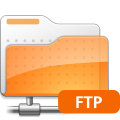Internet Fundamentals/Communications
This lesson introduces Internet communications services, including Voice over IP, file transfer, file sharing, and screen sharing.




Objectives and Skills
editObjectives and skills for this lesson include:[1][2]
- Define and use additional networking and Internet services.
- Efficiently transmit text and binary files using popular Internet services.
Readings
editMultimedia
editActivities
edit- Internet Services
- Complete the tutorial TutorialsPoint: Internet Services.
- VoIP / Messaging
- Complete the tutorial TutorialsPoint: Internet Collaboration Overview. Based on the information provided, decide which of the following communication applications interest you. Then complete one of the following VoIP / messaging tutorials:
- Complete the tutorial GCFLearnFree: Skype. If you don't already have a Skype account, sign up for Skype and call or text a friend.
- Complete the tutorial GCFLearnFree: Google Hangouts. If you don't already have a Hangouts account, sign up for Hangounts and call or text a friend.
- Complete the tutorial GCFLearnFree: WhatsApp. If you don't already have a WhatsApp account, sign up for WhatsApp and call or text a friend.
- Complete the tutorial GCFLearnFree: Snapchat. If you don't already have a Snapchat account, sign up for Snapchat and send snaps to a friend.
- Complete the tutorial TutorialsPoint: Internet Collaboration Overview. Based on the information provided, decide which of the following communication applications interest you. Then complete one of the following VoIP / messaging tutorials:
- Screen Sharing / Remote Desktop
- Research remote desktop applications and use one of the following programs to remotely connect to another computer:
- FTP
- Review ExaVault: How to Access an FTP Server from the Browser or Hostinger: What is FTP?. Using a browser or FTP client, https://dlptest.com/ftp-test/ provides a demo FTP server to practice with.
- Intellectual Property
- Review RIAA:About Piracy. Research legal issues and potential penalties related to illegal peer-to-peer file sharing.
Lesson Summary
edit- Voice over Internet Protocol (also voice over IP, VoIP or IP telephony) is a methodology and group of technologies for the delivery of voice communications and multimedia sessions over Internet Protocol (IP) networks, such as the Internet.[3]
- The terms Internet telephony, broadband telephony, and broadband phone service specifically refer to the provisioning of communications services (voice, fax, SMS, voice-messaging) over the public Internet, rather than via the public switched telephone network (PSTN).[4]
- Instead of being transmitted over a circuit-switched network, VoIP information is packetized, and transmission occurs as IP packets over a packet-switched network.[5]
- VoIP is available on dedicated phones, smartphones, personal computers, and Internet access devices. Calls and SMS text messages may be sent over 3G/4G or Wi-Fi.[6]
- File transfer is the transmission of a computer file through a communication channel from one computer system to another. File transfer options include: transparent file transfers over network file systems, explicit file transfers from dedicated file transfer services like FTP or HTTP, and distributed file transfers over peer-to-peer networks like Bittorent or Gnutella.[7]
- The File Transfer Protocol (FTP) is a standard network protocol used for the transfer of computer files between a client and server on a computer network.[8]
- FTP is built on a client-server model architecture and uses separate control and data connections between the client and the server.[9]
- FTP users may authenticate themselves with a clear-text sign-in protocol, normally in the form of a username and password, but can connect anonymously if the server is configured to allow it.[10]
- For secure transmission that protects the username and password, and encrypts the content, FTP is often secured with SSL/TLS (FTPS).[11]
- SSH File Transfer Protocol (SFTP) is sometimes also used instead of FTP/FTPS, but it is technologically different.[12]
- Peer-to-peer file sharing is the distribution and sharing of digital media using peer-to-peer (P2P) networking technology.[13]
- P2P file sharing allows users to access media files such as books, music, movies, and games using a P2P software program that searches for other connected computers on a P2P network to locate the desired content.[14]
- The nodes (peers) of P2P networks are end-user computers and distribution servers are not required.[15]
- There are five types of P2P users: users who create services, users who allow services, users who facilitate search, users who allow communication, users who are uncooperative and free ride.[16]
- Researchers have examined potential P2P security risks including the release of personal information, bundled spyware, and viruses downloaded from the network.[17]
- The act of file sharing is not illegal and peer-to-peer networks are used for legitimate purposes. The legal issues in file sharing involve violating the laws of copyrighted material.[18]
- Remote desktop refers to a software or operating system feature that allows a personal computer's desktop environment to be run remotely on one system while being displayed on a separate client device.[19]
- Remote desktop applications may allow attaching to an existing user's session and "remote controlling", either displaying the remote control session or blanking the screen.[20]
- Remote desktop software captures the mouse and keyboard inputs from the local computer (client) and sends them to the remote computer (server). The remote computer in turn sends the display commands to the local computer.[21]
Key Terms
edit- application sharing
- An element of remote access, falling under the collaborative software umbrella, that enables two or more users to access a shared application or document from their respective computers simultaneously in real time.[22]
- collaboration
- Application software designed to help people involved in a common task to achieve goals. It can be divided into three categories depending on the level of collaboration: communication, conferencing and co-ordination.[23]
- convergence
- The tendency that as technology changes, different technological systems evolve toward performing similar tasks across information technologies, telecommunication, consumer electronics, and entertainment.[24]
- FTP
- A standard network protocol used for the transfer of computer files between a client and server on a computer network.[25]
- remote access
- Connection to a data-processing system from a remote location, for example, through a Remote Access Service or virtual private network.[26]
- remote desktop software
- A software or operating system feature that allows a personal computer's desktop environment to be run remotely on one system while being displayed on a separate client device.[27]
- RDP
- A proprietary protocol developed by Microsoft, which provides a user with a graphical interface to connect to another computer over a network connection.[28]
- unified communications
- The integration of enterprise communication services such as instant messaging (chat), presence information, voice, mobility features, audio, web & video conferencing, fixed-mobile convergence (FMC), desktop sharing, data sharing, call control and speech recognition with non-real-time communication services such as unified messaging.[29]
- version control
- The management of changes to documents, computer programs, large web sites, and other collections of information.[30]
- VNC
- A graphical desktop sharing system that uses the Remote Frame Buffer protocol (RFB) to remotely control another computer.[31]
- VoIP
- A methodology and group of technologies for the delivery of voice communications and multimedia sessions over Internet Protocol (IP) networks, such as the Internet.[32]
Assessments
edit- Flashcards: Quizlet: Internet Communications
- Quiz: Quizlet: Internet Communications
See Also
editReferences
edit- ↑ CIW: Internet Business Associate Exam Objectives
- ↑ CIW: Internet Business Associate Course Description
- ↑ Wikipedia: Voice over IP
- ↑ Wikipedia: Voice over IP
- ↑ Wikipedia: Voice over IP
- ↑ Wikipedia: Voice over IP
- ↑ Wikipedia: File transfer
- ↑ Wikipedia: File Transfer Protocol
- ↑ Wikipedia: File Transfer Protocol
- ↑ Wikipedia: File Transfer Protocol
- ↑ Wikipedia: File Transfer Protocol
- ↑ Wikipedia: File Transfer Protocol
- ↑ Wikipedia: Peer-to-peer file sharing
- ↑ Wikipedia: Peer-to-peer file sharing
- ↑ Wikipedia: Peer-to-peer file sharing
- ↑ Wikipedia: Peer-to-peer file sharing
- ↑ Wikipedia: Peer-to-peer file sharing
- ↑ Wikipedia: Peer-to-peer file sharing
- ↑ Wikipedia: Remote desktop
- ↑ Wikipedia: Remote desktop
- ↑ Wikipedia: Remote desktop
- ↑ Wikipedia: Application sharing
- ↑ Wikipedia: Collaborative software
- ↑ Wikipedia: Technological convergence
- ↑ Wikipedia: File Transfer Protocol
- ↑ Wikipedia: Remote access
- ↑ Wikipedia: Remote desktop software
- ↑ Wikipedia: Remote Desktop Protocol
- ↑ Wikipedia: Unified communications
- ↑ Wikipedia: Version control
- ↑ Wikipedia: Virtual Network Computing
- ↑ Wikipedia: Voice over IP